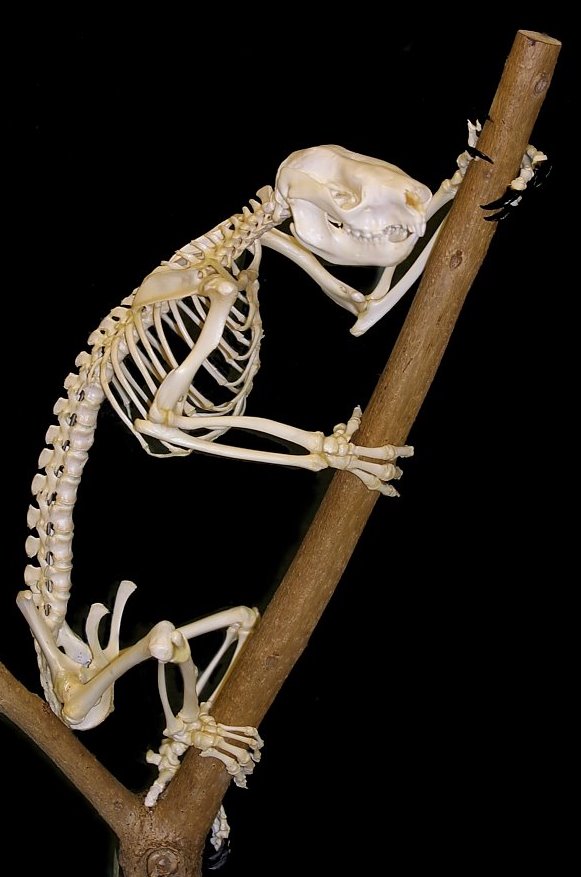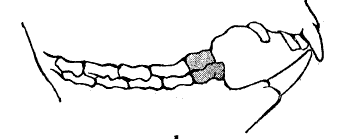|
Phascolarctomorphia
The Phascolarctidae (''φάσκωλος (phaskolos)'' - pouch or bag, ''ἄρκτος (arktos)'' - bear, from the Greek ''phascolos'' + ''arctos'' meaning pouched bear) is a family of marsupials of the order Diprotodontia, consisting of only one extant species, the koala, and six well-known fossil species, with another six less well known fossil species, and two fossil species of the genus ''Koobor'', whose taxonomy is debatable but are placed in this group. The closest relatives of the Phascolarctidae are the wombats, which comprise the family Vombatidae. The fossil record of the family dates back to the Middle Miocene or Late Oligocene. Classification Family Phascolarctidae * Genus ''Nimiokoala'' **'' Nimiokoala greystanesi'' * Genus '' Invictokoala'' **''Invictokoala monticola'' * Genus ''Madakoala'' **''Madakoala robustus'' **''Madakoala wellsi'' **''Madakoala devisi'' * Genus ''Litokoala'' **''Litokoala garyjohnstoni'' **''Litokoala kutjamarpensis'' **''Litokoala kanunkaens ... [...More Info...] [...Related Items...] OR: [Wikipedia] [Google] [Baidu] |
Vombatiforms
The Vombatiformes are one of the three suborders of the large marsupial order Diprotodontia. Seven of the nine known Family (biology), families within this suborder are extinct; only the families Phascolarctidae, with the koala, and Vombatidae, with three extant species of wombat, survive. Among the extinct families are the Diprotodontidae, which includes the rhinoceros sized ''Diprotodon'', believed to be the largest marsupials ever, as well as the "marsupial lions" Thylacoleonidae and "marsupial tapirs" Palorchestidae. Classification After Suborder Vombatiformes * Family †Thylacoleonidae: (Thylacoleonidae, marsupial lions) ** Genus ''Microleo'' ** Genus ''Priscileo'' ** Genus ''Thylacoleo'' ** Genus ''Wakaleo'' *Infraorder Phascolarctomorphia ** Family Phascolarctidae: koala *** Genus ''Phascolarctos'' (one Extant taxon, living species) *** Genus †''Koobor'' *** Genus †''Litokoala'' *** Genus †''Madakoala'' *** Genus †''Nimiokoala'' *** Genus †''Perikoala'' * Infr ... [...More Info...] [...Related Items...] OR: [Wikipedia] [Google] [Baidu] |
Phascolarctos Cinereus
The koala (''Phascolarctos cinereus''), sometimes inaccurately called the koala bear, is an arboreal herbivorous marsupial native to Australia. It is the only extant representative of the family ''Phascolarctidae''. Its closest living relatives are the wombats. The koala is found in coastal areas of the island's eastern and southern regions, inhabiting Queensland, New South Wales, Victoria, and South Australia. It is easily recognisable by its stout, tailless body and large head with round, fluffy ears and large, dark nose. The koala has a body length of and weighs . Its fur colour ranges from silver grey to chocolate brown. Koalas from the northern populations are typically smaller and lighter in colour than their counterparts further south. These populations are possibly separate subspecies, but not all researchers accept this. Koalas typically inhabit open ''Eucalyptus'' woodland, as the leaves of these trees make up most of their diet. This eucalypt diet has low nutr ... [...More Info...] [...Related Items...] OR: [Wikipedia] [Google] [Baidu] |
Koala
The koala (''Phascolarctos cinereus''), sometimes inaccurately called the koala bear, is an arboreal herbivorous marsupial native to Australia. It is the only Extant taxon, extant representative of the Family (biology), family ''Phascolarctidae''. Its closest living relatives are the wombats. The koala is found in coastal areas of the island's eastern and southern regions, inhabiting Queensland, New South Wales, Victoria (state), Victoria, and South Australia. It is easily recognisable by its stout, tailless body and large head with round, fluffy ears and large, dark nose. The koala has a body length of and weighs . Its fur colour ranges from silver grey to chocolate brown. Koalas from the northern populations are typically smaller and lighter in colour than their counterparts further south. These populations are possibly separate subspecies, but not all researchers accept this. Koalas typically inhabit open ''Eucalyptus'' woodland, as the leaves of these trees make up mo ... [...More Info...] [...Related Items...] OR: [Wikipedia] [Google] [Baidu] |
Extant Chattian First Appearances
{{disambig ...
Extant or least concern is the opposite of the word extinct. It may refer to: * Extant hereditary titles * Extant literature, surviving literature, such as ''Beowulf'', the oldest extant manuscript written in English * Extant taxon, a taxon which is not extinct, such as an extant species * Extant Theatre Company, a disability arts organisation * ''Extant'' (TV series), an American television series * Hank Hall, also known as Extant, a DC Comics supervillain See also * Extent (other) Extent may refer to: Computing * Extent (file systems), a contiguous region of computer storage medium reserved for a file * Extent File System, a discontinued file system implementation named after the contiguous region * Extent, a chunk of ... [...More Info...] [...Related Items...] OR: [Wikipedia] [Google] [Baidu] |
Koalas
The koala (''Phascolarctos cinereus''), sometimes inaccurately called the koala bear, is an arboreal herbivorous marsupial native to Australia. It is the only extant representative of the family '' Phascolarctidae''. Its closest living relatives are the wombats. The koala is found in coastal areas of the island's eastern and southern regions, inhabiting Queensland, New South Wales, Victoria, and South Australia. It is easily recognisable by its stout, tailless body and large head with round, fluffy ears and large, dark nose. The koala has a body length of and weighs . Its fur colour ranges from silver grey to chocolate brown. Koalas from the northern populations are typically smaller and lighter in colour than their counterparts further south. These populations are possibly separate subspecies, but not all researchers accept this. Koalas typically inhabit open ''Eucalyptus'' woodland, as the leaves of these trees make up most of their diet. This eucalypt diet has low nut ... [...More Info...] [...Related Items...] OR: [Wikipedia] [Google] [Baidu] |
Springer Science+Business Media
Springer Science+Business Media, commonly known as Springer, is a German multinational publishing company of books, e-books and peer-reviewed journals in science, humanities, technical and medical (STM) publishing. Originally founded in 1842 in Berlin, it expanded internationally in the 1960s, and through mergers in the 1990s and a sale to venture capitalists it fused with Wolters Kluwer and eventually became part of Springer Nature in 2015. Springer has major offices in Berlin, Heidelberg, Dordrecht, and New York City. History Julius Springer founded Springer-Verlag in Berlin in 1842 and his son Ferdinand Springer grew it from a small firm of 4 employees into Germany's then second-largest academic publisher with 65 staff in 1872.Chronology ". Springer Science+Business Media. In 1964, Springer expanded its business internationally, op ... [...More Info...] [...Related Items...] OR: [Wikipedia] [Google] [Baidu] |
Giant Koala
The giant koala (''Phascolarctos stirtoni'') is an extinct arboreal marsupial which existed in Australia during the Pleistocene epoch. ''Phascolarctos stirtoni'' was about one-third larger than the contemporary koala, ''P. cinereus'', and has an estimated weight of , which is the same weight as a large contemporary male koala. Although considered a part of the Australian megafauna, its body mass excludes it from most formal definitions of megafauna. It is better described as a more robust koala, rather than a "giant"; in contrast, a number of Australian megafauna, such as ''Diprotodon'' and '' Procoptodon'', were unambiguously giants, even if not compared to their closest relatives. The two koala species co-existed during the Pleistocene, occupying the same arboreal niche. The reason for the extinction of the larger of the two about 50,000 years ago is unknown, although there are various hypotheses for their extinction. Taxonomy A description of the species was published by Ala ... [...More Info...] [...Related Items...] OR: [Wikipedia] [Google] [Baidu] |
Koala
The koala (''Phascolarctos cinereus''), sometimes inaccurately called the koala bear, is an arboreal herbivorous marsupial native to Australia. It is the only Extant taxon, extant representative of the Family (biology), family ''Phascolarctidae''. Its closest living relatives are the wombats. The koala is found in coastal areas of the island's eastern and southern regions, inhabiting Queensland, New South Wales, Victoria (state), Victoria, and South Australia. It is easily recognisable by its stout, tailless body and large head with round, fluffy ears and large, dark nose. The koala has a body length of and weighs . Its fur colour ranges from silver grey to chocolate brown. Koalas from the northern populations are typically smaller and lighter in colour than their counterparts further south. These populations are possibly separate subspecies, but not all researchers accept this. Koalas typically inhabit open ''Eucalyptus'' woodland, as the leaves of these trees make up mo ... [...More Info...] [...Related Items...] OR: [Wikipedia] [Google] [Baidu] |
Nimiokoala Greystanesi
''Nimiokoala greystanesi'' is an extinct marsupial, closely related to the extant koala, that inhabited northwestern Queensland in the early-middle Miocene (23–16 million years ago). It is the only species assigned to the genus ''Nimiokoala''. Along with species of sister genus ''Litokoala'', it is the smallest representative of family Phascolarctidae. Based on cladistic analysis, ''Nimiokoala'' is one of the more basal genera of Phascolarctide. It died out due to climate change rendering the environment more arid. It probably had a more generalized diet than that of the modern species, but its exact food preferences are unknown. Etymology The generic name, ''Nimiokoala,'' is derived from the Latin word ''Nimio'' "excessive" referring to its complex molar morphology relative to other koala species. The specific name, ''greystanesi,'' honors Greystanes High School. History of research As of 2013, the fossil record of extinct koalas consists of 163 specimens across 58 ... [...More Info...] [...Related Items...] OR: [Wikipedia] [Google] [Baidu] |
Late Oligocene
The Chattian is, in the geologic timescale The geologic time scale or geological time scale (GTS) is a representation of time based on the rock record of Earth. It is a system of chronological dating that uses chronostratigraphy (the process of relating strata to time) and geochron ..., the younger of two age (geology), ages or upper of two stage (stratigraphy), stages of the Oligocene epoch (geology), Epoch/Series (stratigraphy), Series. It spans the time between . The Chattian is preceded by the Rupelian and is followed by the Aquitanian (stage), Aquitanian (the lowest stage of the Miocene). Stratigraphic definition The Chattian was introduced by Austrian palaeontologist Theodor Fuchs in 1894. Fuchs named the stage after the Chatti, a Germanic peoples, Germanic tribe.Berry, Edward W"The Mayence Basin, a Chapter of Geologic History" ''The Scientific Monthly'', Vol. 16, No. 2, February 1923. pp. 114. Retrieved March 18, 2020. The original type locality (geology), type l ... [...More Info...] [...Related Items...] OR: [Wikipedia] [Google] [Baidu] |
Middle Miocene
The Middle Miocene is a sub-epoch of the Miocene epoch (geology), epoch made up of two Stage (stratigraphy), stages: the Langhian and Serravallian stages. The Middle Miocene is preceded by the Early Miocene. The sub-epoch lasted from 15.97 ± 0.05 Ma (million years ago) to 11.608 ± 0.005 Ma. During this period, a sharp drop in global temperatures took place. This event is known as the Middle Miocene disruption, Middle Miocene Climatic Transition. For the purpose of establishing European land mammal ages, this sub-epoch is equivalent to the Astaracian age. References External links GeoWhen Database - Middle Miocene Miocene, .02 Miocene geochronology, 02 Langhian, * Serravallian, * {{geochronology-stub ... [...More Info...] [...Related Items...] OR: [Wikipedia] [Google] [Baidu] |


